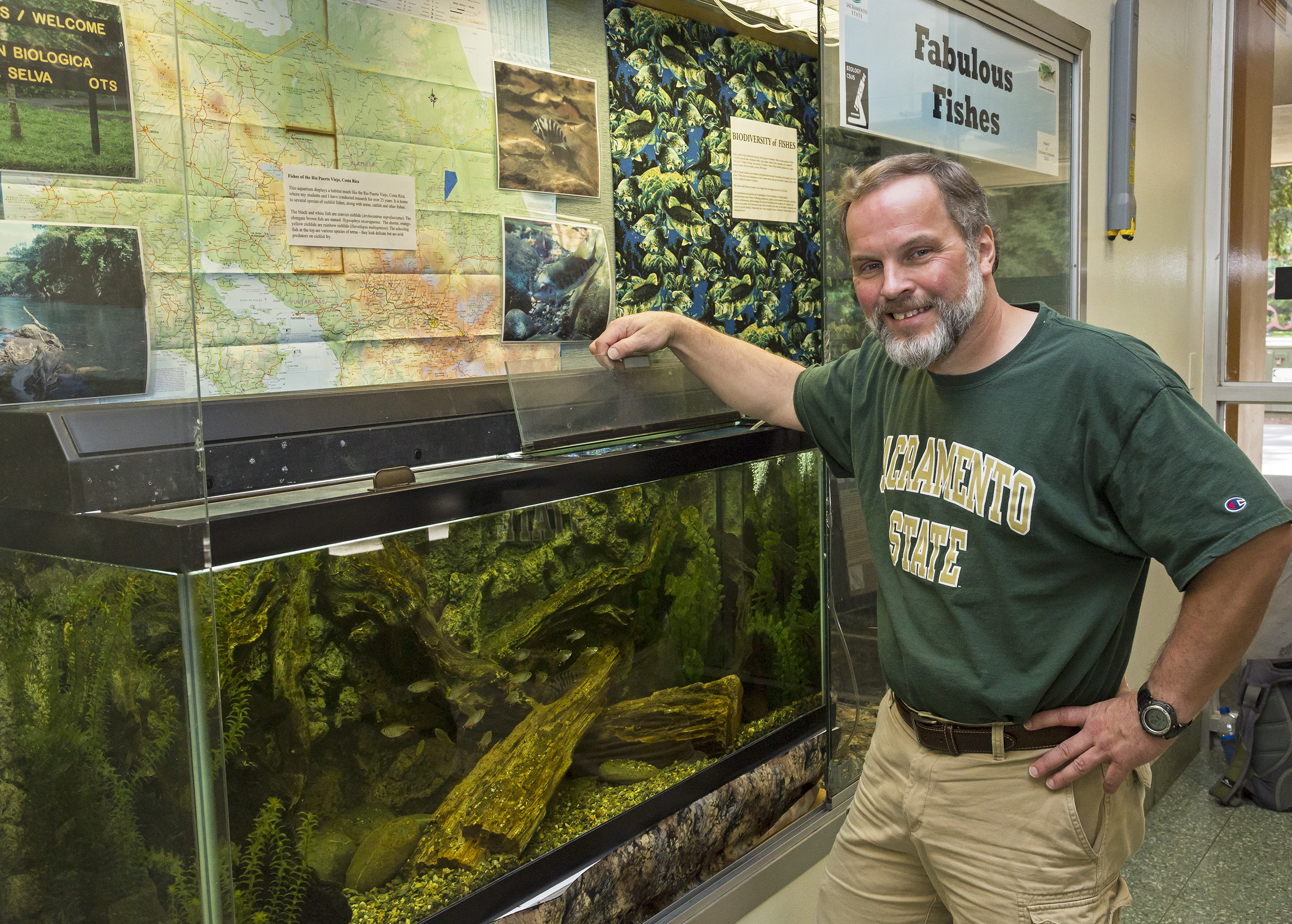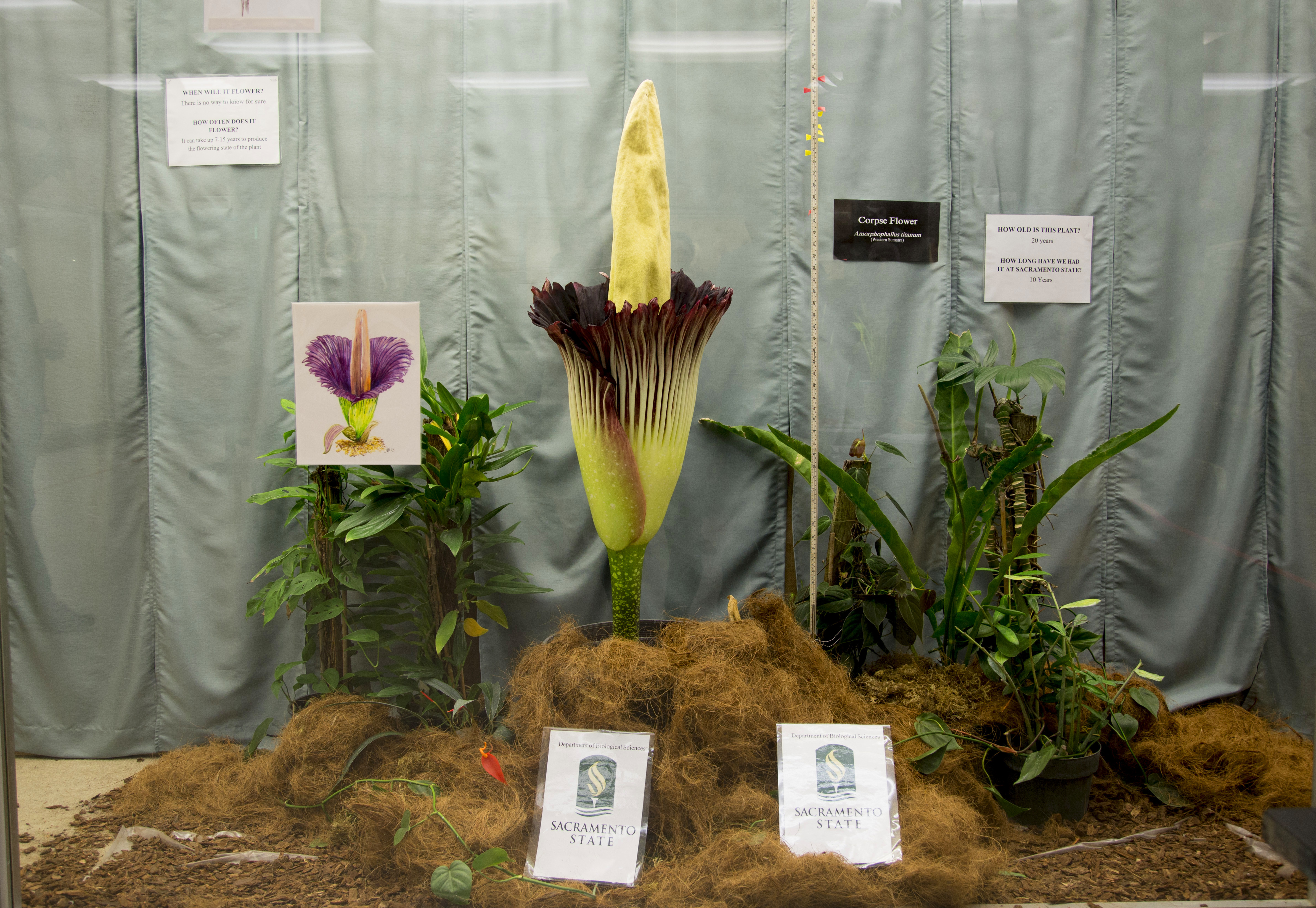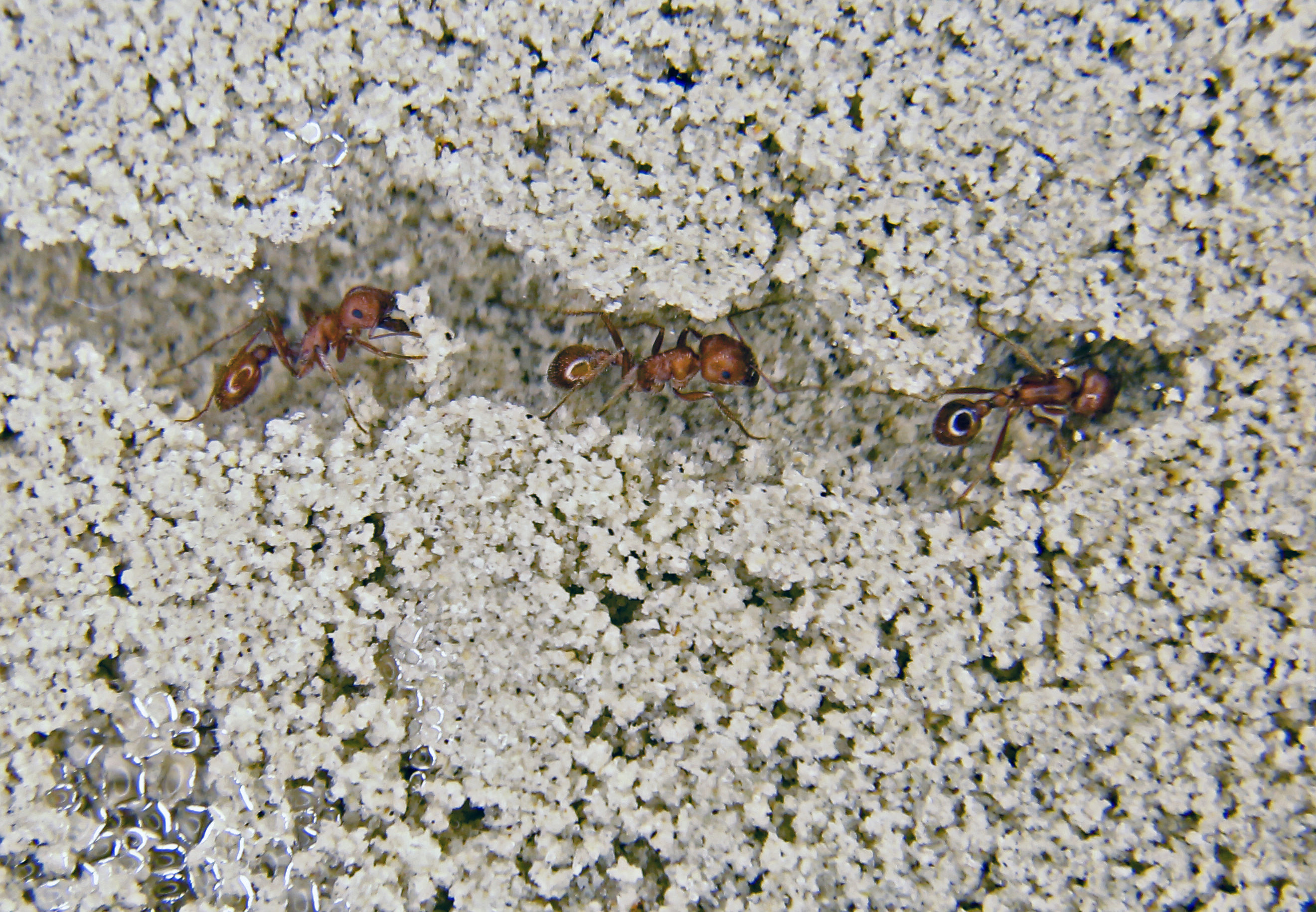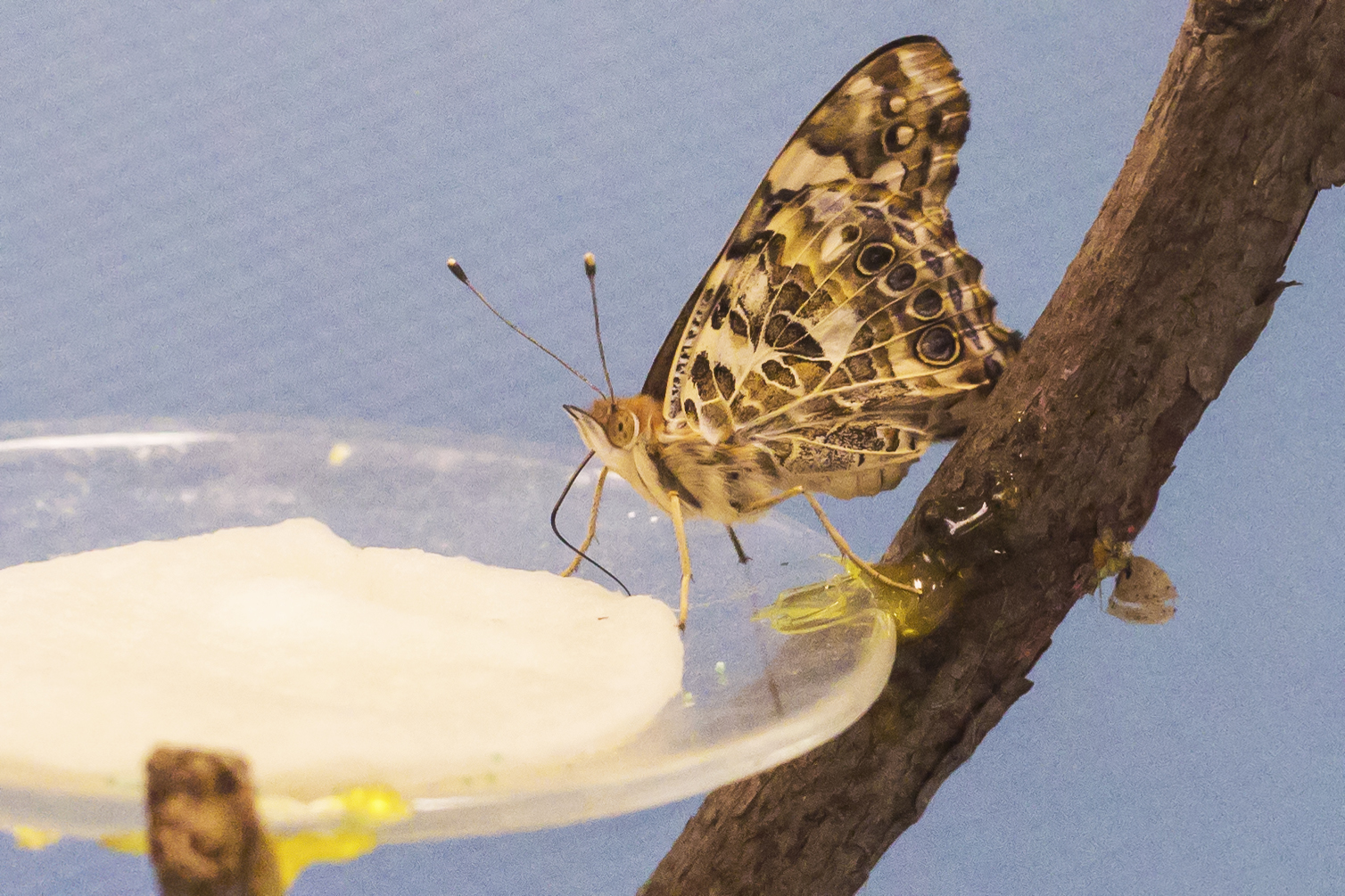

Alive and – sometimes – kickin’
ACADEMICS
Ahmed Ortiz
Sacramento State’s Living Gallery has exhibited a range of characteristics: creepy carnivorous plants, crawly silk worms and ants, cuddly baby quail – even a stinky giant flower.
Sequoia Hall’s lobby has come to life each semester since spring 2015 under the eye of Merrill Roseberry, a University staff biologist who curates the gallery. Its content often is tied to course curriculum. The silk worms, for instance, aligned with an entomology course (Biology 157). Sometimes the gallery is used as a hook to try to boost enrollment.
“It’s kind of a collaborative thing between faculty and staff,” Roseberry says. “We kind of talk to each other about what’s going on in the department … and I figure out from all of those thoughts what’s actually obtainable for so small a space.” The spring 2018 exhibit features the life cycle of frogs, from tadpole to four-legged hopper.
Here are some previous exhibits:
Corpse flower
(Spring ’15)

“The plants are not doing too well in their native habitat, so seeing this plant is important in terms of understanding why we try to preserve things.”
– Michael Fong, Sac State biologist
Fast facts: Also known as the titan arum, the corpse flower is found only in western Sumatra and western Java. It requires seven to 10 years of vegetative growth before its first bloom and can take up to 20 years between subsequent blooms, which generally last about 12 hours. It has the largest flowering structure – or inflorescence – of any plant in the world and can grow up to 10 feet tall, 3 feet wide, and weigh up to 25 pounds.
It is so named because of the bloom’s powerful aroma, which many observers liken to that which emanates from a dead body.
Ant farm
(Summer ’15)

“Even without a queen, they carry out their normal day-to-day business. Every ant is assigned a role. … Because they’re so organized, they can get a lot done.”
– Merrill Roseberry, Sac State biologist and Living Gallery curator
Fast facts: Ant species have various traits. The roughly 90 red harvester ants featured in the display are known for building chambers to be used as granaries. There they store seeds foraged in spring and summer to survive the fall and winter. All on display were sterile females. There was no queen because transport of queen ants across state lines is illegal, and the ants were brought to Sacramento State from Utah.
Painted lady butterflies
(Fall ’15)

“Inside the pupa, the butterfly undergoes a process where the entire body of the caterpillar is eaten away by enzymes and then rebuilt into the adult butterfly.”
– Roseberry
Fast facts: The painted lady is similar to a smaller version of the famed monarch. Its four life stages – egg, caterpillar, chrysalis/cocoon and butterfly – play out over one to two months. So the need to perpetuate is urgent: they begin mating within 24 hours of emerging from their cocoons. Painted ladies are found worldwide and have a long migration route from Mexico north along the length of California. It takes several generations of painted ladies to go up and back.
Button quail
(Spring ’16)
“They typically like to be in small, enclosed areas, so the 75-gallon fish tank (they were kept in would) keep them happy all the way through adulthood. If they stayed there the rest of their lives, they’d be happy.”
– Roseberry
Fast facts: What began with 19 little eggs became one of the cutest displays the Living Gallery has seen. The University community got to watch the chicks grow up before its eyes. The flightless birds, which weigh about four ounces and are the size of an average fist, can be kept as pets. Roseberry arranged for those displayed to be adopted at the conclusion of the exhibit.
Carnivorous plants
(Spring ’17)
“I hope people will walk away from this exhibit with a better familiarization with a small part of the plant world. And it would be great if someone was inspired in taking more biology courses.”
– Daniel Pfarr, Sacramento State greenhouse manager
Fast facts: Certain plants evolved into carnivores out of necessity, developing in areas with nutrient-poor, acidic soils. They snare their prey passively, as the pitcher plant, in which the victim slips into a pitcher-shaped appendage and is trapped by the interior’s glossy, slick sides; or actively, as the famed Venus flytrap, the jaw-shaped leaves of which snap shut on victims that land between them. They subsist primarily on insects, but large pitcher plants can consume small vertebrates.
Silkworms
(Fall ’17)
“On a geological scale, 5,000 years is pretty brief, and the primary driver behind these changes is human interaction. Humans can actually create a new species by creating selected pressures that don’t exist in nature.”
– Roseberry
Fast facts: The species known scientifically as Bombyx mori was domesticated specifically for producing silk. It exists only in captivity, and although the moth it becomes at the end of its metamorphoses has wings, it is flightless. As a captive creature, it has no need for camouflage, so its color has evolved over 5,000 years to a canvas-like pale beige.
05/07/18